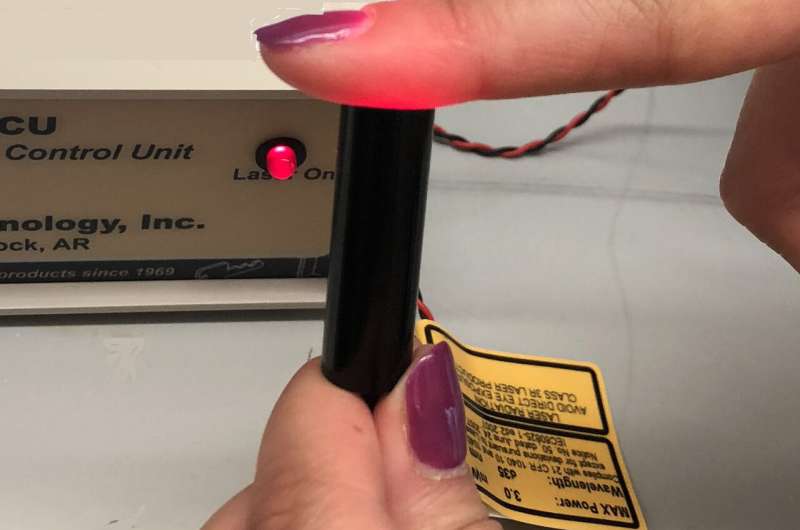Light helps arthritis treatments target joints

Although today's rheumatoid arthritis treatments can reduce symptoms, they often come with serious side effects. Results from a new mouse study suggest that a new light-activated drug delivery method helps confine treatments to the joints, which could reduce whole-body side effects.
In the U.S., 1.3 million people are currently diagnosed with rheumatoid arthritis, a chronic disease that causes painful joint swelling that can eventually lead to bone loss and joint deformities.
"Our delivery system decreased arthritis in our experimental model while carrying and delivering much lower quantities of drug than is required for currently approved treatment," said Emilia Zywot, a doctoral candidate from the University of North Carolina in Chapel Hill and member of the team that developed the new drug delivery approach.
Ms. Zywot was scheduled to present this research at the American Society for Pharmacology and Experimental Therapeutics annual meeting in San Diego this month. Though the meeting, to be held in conjunction with the 2020 Experimental Biology conference, was canceled in response to the COVID-19 outbreak, the research team's abstract was published in this month's issue of The FASEB Journal.
For the new delivery approach, a drug is attached to vitamin B12 molecules that are engineered to respond to low levels of laser light. Transfusion is then used to deliver red blood cells loaded with the vitamin B12 molecules into mice, where the cells circulate until activated.
The drug is only activated in areas that receive a low level of long-wavelength laser light, which can be administered from outside the body. This controllable activation allows a high concentration of drug to be released at the site of inflammation, thus requiring overall lower whole-body, or systemic, amounts of the drug for effective treatment.
To test their new method, the researchers administered the arthritis drug dexamethasone to arthritic mice via traditional injections and the light-based delivery system. Laser light was used to activate the light-responsive drug in an arthritic paw. They found that the light-based delivery system decreased arthritis using a three-fold lower dose of dexamethasone.
"We hope that our drug delivery platform will better control drug delivery and decrease the amount of systemic exposure and off-target effects," said Ms. Zywot. "We envision that it will be useful for any drug that can be synthetically attached to our light-responsive system, making it amenable to applications beyond arthritis."
The researchers plan to further investigate the light responsive drug delivery system in mouse models of arthritis to better understand efficacy of the new system compared to current treatments.





















